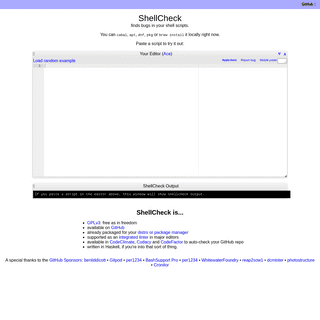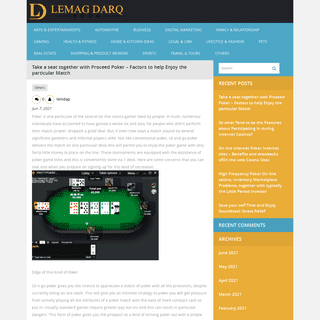Are you over 18 and want to see adult content?
More Annotations

A complete backup of nederlandschoon.nl
Are you over 18 and want to see adult content?

A complete backup of thepositivemom.com
Are you over 18 and want to see adult content?

A complete backup of long-champoutlet.com
Are you over 18 and want to see adult content?

A complete backup of startupworld.com
Are you over 18 and want to see adult content?
Favourite Annotations

A complete backup of https://mixdrop.to
Are you over 18 and want to see adult content?

A complete backup of https://shellcheck.net
Are you over 18 and want to see adult content?

A complete backup of https://jpsoft.com
Are you over 18 and want to see adult content?

A complete backup of https://athenstransport.com
Are you over 18 and want to see adult content?

A complete backup of https://golf-national.com
Are you over 18 and want to see adult content?

A complete backup of https://lemagdarqroom.com
Are you over 18 and want to see adult content?

A complete backup of https://modafinipls.com
Are you over 18 and want to see adult content?

A complete backup of https://forbeshousemuseum.org
Are you over 18 and want to see adult content?

A complete backup of https://newvashikaranspecialist.com
Are you over 18 and want to see adult content?

A complete backup of https://sii.or.jp
Are you over 18 and want to see adult content?

A complete backup of https://rucoins.info
Are you over 18 and want to see adult content?

A complete backup of https://elikacavesuites.com
Are you over 18 and want to see adult content?
Text
HERMIT ECLIPSE
Next eclipse in 6 days: 10 Jun, 2021 AD — Annular Solar Eclipse The Sun will be 94% covered in a moderate annular eclipse, lasting 3 minutes and 51 seconds and covering a very broad path, 527 km wide atmaximum.
HISTORIC SOLAR ECLIPSES 3 May, 1375 BC. max: 04:51 UT. Total Solar Eclipse. (umbral mag. 1.03; Saros 16) A dramatic total eclipse plunged the Sun into darkness for 2 minutes and 7 seconds at maximum, creating an amazing spectacle for observers in a path up to 158 km wide. It was seen inECLIPSE SEARCH
Query the Eclipse Database. To do a search, pick a range of years to search, or leave those fields blank to search the whole database. Then pick parameters to narrow down your search. Any field left blank will match all possible values for that field. Leaving all the fields blank, and selecting all the eclipse types, will return the whole THE SCIENCE: MECHANICS OF LUNAR ECLIPSES A lunar eclipse happens at a Full Moon, when the Moon's tilted orbit brings it into the Earth's shadow, which can then be seen cast onto the Moon. While not as spectacular as a total solar eclipse, a lunar eclipse is much easier to see; and a total lunar eclipse is an amazing and beautiful sight.. This page attempts to explain how lunar eclipses work, and the different types of lunar eclipse. LUNAR ECLIPSE CATALOG Lunar Eclipse Catalog. This catalog has a page for every lunar eclipse from 2000 BC to 3000 AD, 12,064 in all, shown in groups of 20 years at a time. You can go to any eclipse by selecting the milennium, century and 20-year period from the navigation tabs above; then THE SCIENCE: ECLIPSE CYCLES The Science: Eclipse Cycles. As described previously, an eclipse occurs when the Moon comes between the Earth and the Sun (a solar eclipse), or the Earth comes between the Moon and the Sun (a lunar eclipse). Since the Moon orbits around the Earth, as we described in The Earth and Moon, it's easy to see how this can occur.FIELD RECORDING
SAROS SERIES OF SOLAR ECLIPSES Solar Eclipses in Saros Series 20. This page lists all the solar eclipses in saros series 20 which are in our database. Note that the beginning of this series is not included in our database, so the list below only covers the latter part of the series. THE WHEN: SOLAR ECLIPSES IN THE UK The total solar eclipse of 12 August 2026 will plunge the entire UK into deep eclipse, of 90% or more, close to sunset. There are other partial solar eclipses in the UK in the 21st century, but a particularly spectacular example is the total eclipse of 3 September 2081, which will give the whole UK a THE SCIENCE: THE EARTH AND MOONSEE MORE ON MOONBLINK.INFOHERMIT ECLIPSE
Next eclipse in 6 days: 10 Jun, 2021 AD — Annular Solar Eclipse The Sun will be 94% covered in a moderate annular eclipse, lasting 3 minutes and 51 seconds and covering a very broad path, 527 km wide atmaximum.
HISTORIC SOLAR ECLIPSES 3 May, 1375 BC. max: 04:51 UT. Total Solar Eclipse. (umbral mag. 1.03; Saros 16) A dramatic total eclipse plunged the Sun into darkness for 2 minutes and 7 seconds at maximum, creating an amazing spectacle for observers in a path up to 158 km wide. It was seen inECLIPSE SEARCH
Query the Eclipse Database. To do a search, pick a range of years to search, or leave those fields blank to search the whole database. Then pick parameters to narrow down your search. Any field left blank will match all possible values for that field. Leaving all the fields blank, and selecting all the eclipse types, will return the whole THE SCIENCE: MECHANICS OF LUNAR ECLIPSES A lunar eclipse happens at a Full Moon, when the Moon's tilted orbit brings it into the Earth's shadow, which can then be seen cast onto the Moon. While not as spectacular as a total solar eclipse, a lunar eclipse is much easier to see; and a total lunar eclipse is an amazing and beautiful sight.. This page attempts to explain how lunar eclipses work, and the different types of lunar eclipse. LUNAR ECLIPSE CATALOG Lunar Eclipse Catalog. This catalog has a page for every lunar eclipse from 2000 BC to 3000 AD, 12,064 in all, shown in groups of 20 years at a time. You can go to any eclipse by selecting the milennium, century and 20-year period from the navigation tabs above; then THE SCIENCE: ECLIPSE CYCLES The Science: Eclipse Cycles. As described previously, an eclipse occurs when the Moon comes between the Earth and the Sun (a solar eclipse), or the Earth comes between the Moon and the Sun (a lunar eclipse). Since the Moon orbits around the Earth, as we described in The Earth and Moon, it's easy to see how this can occur.FIELD RECORDING
SAROS SERIES OF SOLAR ECLIPSES Solar Eclipses in Saros Series 20. This page lists all the solar eclipses in saros series 20 which are in our database. Note that the beginning of this series is not included in our database, so the list below only covers the latter part of the series. THE WHEN: SOLAR ECLIPSES IN THE UK The total solar eclipse of 12 August 2026 will plunge the entire UK into deep eclipse, of 90% or more, close to sunset. There are other partial solar eclipses in the UK in the 21st century, but a particularly spectacular example is the total eclipse of 3 September 2081, which will give the whole UK a THE SCIENCE: THE EARTH AND MOONSEE MORE ON MOONBLINK.INFOECLIPSE DATABASE
The Moon will barely edge into total eclipse for just 14 minutes and 30 seconds. With the Moon just barely inside the Earth's umbral shadow, the Moon may be quite bright, but even so, this should be worth seeing for observers from the western Americas, the Pacific, Australia, and south-east Asia.ECLIPSE SEARCH
Query the Eclipse Database. To do a search, pick a range of years to search, or leave those fields blank to search the whole database. Then pick parameters to narrow down your search. Any field left blank will match all possible values for that field. Leaving all the fields blank, and selecting all the eclipse types, will return the wholeWHEN WILL I SEE IT
Lunar Eclipses. Lunar eclipses are different; since they occur on the Moon, any location on Earth which can see the Moon at the time can see the eclipse. Since a lunar eclipse happens at the full Moon, you will see it basically if it happens at night in your local time; so yourchance of
SOLAR ECLIPSE CATALOG Solar Eclipse Catalog. This catalog has a page for every solar eclipse from 2000 BC to 3000 AD, 11,898 in all, shown in groups of 20 years at a time. You can go to any eclipse by selecting the milennium, century and 20-year period from the navigation tabs above; thenFIELD RECORDING
Field Recording. Digital technology has been a help for many types of creative work, including field recording — but it also brings new challenges, as the computer technology involved intrudes more and more into your workflow. An audio recorder is a computer, with its own operating system and user interface; and though we might try to ignore THE SCIENCE: MECHANICS OF SOLAR ECLIPSES The Science: Mechanics of Solar Eclipses. All solar eclipses involve the Moon passing between the Earth and the Sun, and casting a shadow on the Earth. However, the type of eclipse which can be seen from a given location depends on whether the Moon passes directly, or only partly, between the Earth and Sun; but also on where on Earth youstand
THE SCIENCE: ECLIPSE CYCLES The Science: Eclipse Cycles. As described previously, an eclipse occurs when the Moon comes between the Earth and the Sun (a solar eclipse), or the Earth comes between the Moon and the Sun (a lunar eclipse). Since the Moon orbits around the Earth, as we described in The Earth and Moon, it's easy to see how this can occur. THE WHAT: EYE SAFETY The Danger of the Sun. A solar eclipse can be viewed safely with the naked eye only during the few brief seconds or minutes of a total solar eclipse, when the Sun itself is completely obscured by the Moon. Partial eclipses, annular eclipses, and the partial phases of total solar eclipses are never safe to watch without taking special precautions.. Even when 99% of the Sun's surface is obscured FIELD RECORDING: A TECHNICAL INTRODUCTION Field Recording: A Technical Introduction. This series of videos presents a beginner's guide to field recording, particularly looking at the technical aspects. The videos are listed below. If you wish, you can also find them on the Vimeo channel Technical Field Recording. The Vimeo channel where the Technical Field Recording videos live. THE SCIENCE: A GUIDED TOUR OF THE SOLAR SYSTEM The AU is based on the distance from the Earth to the Sun, and is defined as 149,597,870 km (about 150 million km, or 93 million miles). The Earth is, of course, 1 AU from the Sun. Given this outrageous scale, it's quite hard to explain exactly how all the pieces of our celestial home turf relate to each other.HERMIT ECLIPSE
Next eclipse in 6 days: 10 Jun, 2021 AD — Annular Solar Eclipse The Sun will be 94% covered in a moderate annular eclipse, lasting 3 minutes and 51 seconds and covering a very broad path, 527 km wide atmaximum.
HISTORIC SOLAR ECLIPSES 3 May, 1375 BC. max: 04:51 UT. Total Solar Eclipse. (umbral mag. 1.03; Saros 16) A dramatic total eclipse plunged the Sun into darkness for 2 minutes and 7 seconds at maximum, creating an amazing spectacle for observers in a path up to 158 km wide. It was seen inECLIPSE SEARCH
Query the Eclipse Database. To do a search, pick a range of years to search, or leave those fields blank to search the whole database. Then pick parameters to narrow down your search. Any field left blank will match all possible values for that field. Leaving all the fields blank, and selecting all the eclipse types, will return the whole THE SCIENCE: MECHANICS OF LUNAR ECLIPSES A lunar eclipse happens at a Full Moon, when the Moon's tilted orbit brings it into the Earth's shadow, which can then be seen cast onto the Moon. While not as spectacular as a total solar eclipse, a lunar eclipse is much easier to see; and a total lunar eclipse is an amazing and beautiful sight.. This page attempts to explain how lunar eclipses work, and the different types of lunar eclipse. LUNAR ECLIPSE CATALOG Lunar Eclipse Catalog. This catalog has a page for every lunar eclipse from 2000 BC to 3000 AD, 12,064 in all, shown in groups of 20 years at a time. You can go to any eclipse by selecting the milennium, century and 20-year period from the navigation tabs above; then THE SCIENCE: ECLIPSE CYCLES The Science: Eclipse Cycles. As described previously, an eclipse occurs when the Moon comes between the Earth and the Sun (a solar eclipse), or the Earth comes between the Moon and the Sun (a lunar eclipse). Since the Moon orbits around the Earth, as we described in The Earth and Moon, it's easy to see how this can occur.FIELD RECORDING
SAROS SERIES OF SOLAR ECLIPSES Solar Eclipses in Saros Series 20. This page lists all the solar eclipses in saros series 20 which are in our database. Note that the beginning of this series is not included in our database, so the list below only covers the latter part of the series. THE WHEN: SOLAR ECLIPSES IN THE UK The total solar eclipse of 12 August 2026 will plunge the entire UK into deep eclipse, of 90% or more, close to sunset. There are other partial solar eclipses in the UK in the 21st century, but a particularly spectacular example is the total eclipse of 3 September 2081, which will give the whole UK a THE SCIENCE: THE EARTH AND MOONSEE MORE ON MOONBLINK.INFOHERMIT ECLIPSE
Next eclipse in 6 days: 10 Jun, 2021 AD — Annular Solar Eclipse The Sun will be 94% covered in a moderate annular eclipse, lasting 3 minutes and 51 seconds and covering a very broad path, 527 km wide atmaximum.
HISTORIC SOLAR ECLIPSES 3 May, 1375 BC. max: 04:51 UT. Total Solar Eclipse. (umbral mag. 1.03; Saros 16) A dramatic total eclipse plunged the Sun into darkness for 2 minutes and 7 seconds at maximum, creating an amazing spectacle for observers in a path up to 158 km wide. It was seen inECLIPSE SEARCH
Query the Eclipse Database. To do a search, pick a range of years to search, or leave those fields blank to search the whole database. Then pick parameters to narrow down your search. Any field left blank will match all possible values for that field. Leaving all the fields blank, and selecting all the eclipse types, will return the whole THE SCIENCE: MECHANICS OF LUNAR ECLIPSES A lunar eclipse happens at a Full Moon, when the Moon's tilted orbit brings it into the Earth's shadow, which can then be seen cast onto the Moon. While not as spectacular as a total solar eclipse, a lunar eclipse is much easier to see; and a total lunar eclipse is an amazing and beautiful sight.. This page attempts to explain how lunar eclipses work, and the different types of lunar eclipse. LUNAR ECLIPSE CATALOG Lunar Eclipse Catalog. This catalog has a page for every lunar eclipse from 2000 BC to 3000 AD, 12,064 in all, shown in groups of 20 years at a time. You can go to any eclipse by selecting the milennium, century and 20-year period from the navigation tabs above; then THE SCIENCE: ECLIPSE CYCLES The Science: Eclipse Cycles. As described previously, an eclipse occurs when the Moon comes between the Earth and the Sun (a solar eclipse), or the Earth comes between the Moon and the Sun (a lunar eclipse). Since the Moon orbits around the Earth, as we described in The Earth and Moon, it's easy to see how this can occur.FIELD RECORDING
SAROS SERIES OF SOLAR ECLIPSES Solar Eclipses in Saros Series 20. This page lists all the solar eclipses in saros series 20 which are in our database. Note that the beginning of this series is not included in our database, so the list below only covers the latter part of the series. THE WHEN: SOLAR ECLIPSES IN THE UK The total solar eclipse of 12 August 2026 will plunge the entire UK into deep eclipse, of 90% or more, close to sunset. There are other partial solar eclipses in the UK in the 21st century, but a particularly spectacular example is the total eclipse of 3 September 2081, which will give the whole UK a THE SCIENCE: THE EARTH AND MOONSEE MORE ON MOONBLINK.INFOECLIPSE DATABASE
The Moon will barely edge into total eclipse for just 14 minutes and 30 seconds. With the Moon just barely inside the Earth's umbral shadow, the Moon may be quite bright, but even so, this should be worth seeing for observers from the western Americas, the Pacific, Australia, and south-east Asia.ECLIPSE SEARCH
Query the Eclipse Database. To do a search, pick a range of years to search, or leave those fields blank to search the whole database. Then pick parameters to narrow down your search. Any field left blank will match all possible values for that field. Leaving all the fields blank, and selecting all the eclipse types, will return the wholeWHEN WILL I SEE IT
Lunar Eclipses. Lunar eclipses are different; since they occur on the Moon, any location on Earth which can see the Moon at the time can see the eclipse. Since a lunar eclipse happens at the full Moon, you will see it basically if it happens at night in your local time; so yourchance of
SOLAR ECLIPSE CATALOG Solar Eclipse Catalog. This catalog has a page for every solar eclipse from 2000 BC to 3000 AD, 11,898 in all, shown in groups of 20 years at a time. You can go to any eclipse by selecting the milennium, century and 20-year period from the navigation tabs above; thenFIELD RECORDING
Field Recording. Digital technology has been a help for many types of creative work, including field recording — but it also brings new challenges, as the computer technology involved intrudes more and more into your workflow. An audio recorder is a computer, with its own operating system and user interface; and though we might try to ignore THE SCIENCE: MECHANICS OF SOLAR ECLIPSES The Science: Mechanics of Solar Eclipses. All solar eclipses involve the Moon passing between the Earth and the Sun, and casting a shadow on the Earth. However, the type of eclipse which can be seen from a given location depends on whether the Moon passes directly, or only partly, between the Earth and Sun; but also on where on Earth youstand
THE SCIENCE: ECLIPSE CYCLES The Science: Eclipse Cycles. As described previously, an eclipse occurs when the Moon comes between the Earth and the Sun (a solar eclipse), or the Earth comes between the Moon and the Sun (a lunar eclipse). Since the Moon orbits around the Earth, as we described in The Earth and Moon, it's easy to see how this can occur. THE WHAT: EYE SAFETY The Danger of the Sun. A solar eclipse can be viewed safely with the naked eye only during the few brief seconds or minutes of a total solar eclipse, when the Sun itself is completely obscured by the Moon. Partial eclipses, annular eclipses, and the partial phases of total solar eclipses are never safe to watch without taking special precautions.. Even when 99% of the Sun's surface is obscured FIELD RECORDING: A TECHNICAL INTRODUCTION Field Recording: A Technical Introduction. This series of videos presents a beginner's guide to field recording, particularly looking at the technical aspects. The videos are listed below. If you wish, you can also find them on the Vimeo channel Technical Field Recording. The Vimeo channel where the Technical Field Recording videos live. THE SCIENCE: A GUIDED TOUR OF THE SOLAR SYSTEM The AU is based on the distance from the Earth to the Sun, and is defined as 149,597,870 km (about 150 million km, or 93 million miles). The Earth is, of course, 1 AU from the Sun. Given this outrageous scale, it's quite hard to explain exactly how all the pieces of our celestial home turf relate to each other.MOON BLINK
Moon Blink: A temporary evening blindness occasioned by sleeping in the moonshine in tropical climates; it is technically designated nyctalopia. — The Sailor's Word-Book; Admiral W.H. Smyth, 1867.HERMIT ECLIPSE
Next eclipse in 6 days: 10 Jun, 2021 AD — Annular Solar Eclipse The Sun will be 94% covered in a moderate annular eclipse, lasting 3 minutes and 51 seconds and covering a HISTORIC SOLAR ECLIPSES 3 May, 1375 BC. max: 04:51 UT. Total Solar Eclipse. (umbral mag. 1.03; Saros 16) A dramatic total eclipse plunged the Sun into darkness for 2 minutes and 7 seconds at maximum, creating an amazing spectacle for observers in a path up to 158 km wide. It was seen inECLIPSE SEARCH
Query the Eclipse Database. To do a search, pick a range of years to search, or leave those fields blank to search the whole database. Then pick parameters to narrow down your search. Any field left blank will match all possible values for that field. Leaving all the fields blank, and selecting all the eclipse types, will return the whole LUNAR ECLIPSE CATALOG Lunar Eclipse Catalog. This catalog has a page for every lunar eclipse from 2000 BC to 3000 AD, 12,064 in all, shown in groups of 20 years at a time. You can go to any eclipse by selecting the milennium, century and 20-year period from the navigation tabs above; thenFIELD RECORDING
THE SCIENCE: MECHANICS OF LUNAR ECLIPSES A lunar eclipse happens at a Full Moon, when the Moon's tilted orbit brings it into the Earth's shadow, which can then be seen cast onto the Moon. While not as spectacular as a total solar eclipse, a lunar eclipse is much easier to see; and a total lunar eclipse is an amazing and beautiful sight.. This page attempts to explain how lunar eclipses work, and the different types of lunar eclipse.COLOUR AND PALETTES
Introduction. A Mandelbrot-like fractal is a set of numbers which correspond to some criterion, such as remaining stable under the iteration of a given function. As such, each point is either inside or outside the set, and a "pure" colouring of the Mandelbrot set would only use two colours (traditionally black is used for points inside the set, and white for points outside). THE WHEN: SOLAR ECLIPSES IN THE UK The total solar eclipse of 12 August 2026 will plunge the entire UK into deep eclipse, of 90% or more, close to sunset. There are other partial solar eclipses in the UK in the 21st century, but a particularly spectacular example is the total eclipse of 3 September 2081, which will give the whole UK a FIELD RECORDING: A TECHNICAL INTRODUCTION Field Recording: A Technical Introduction. This series of videos presents a beginner's guide to field recording, particularly looking at the technical aspects. The videos are listed below. If you wish, you can also find them on the Vimeo channel Technical Field Recording. The Vimeo channel where the Technical Field Recording videos live.MOON BLINK
Moon Blink: A temporary evening blindness occasioned by sleeping in the moonshine in tropical climates; it is technically designated nyctalopia. — The Sailor's Word-Book; Admiral W.H. Smyth, 1867.HERMIT ECLIPSE
Next eclipse in 6 days: 10 Jun, 2021 AD — Annular Solar Eclipse The Sun will be 94% covered in a moderate annular eclipse, lasting 3 minutes and 51 seconds and covering a HISTORIC SOLAR ECLIPSES 3 May, 1375 BC. max: 04:51 UT. Total Solar Eclipse. (umbral mag. 1.03; Saros 16) A dramatic total eclipse plunged the Sun into darkness for 2 minutes and 7 seconds at maximum, creating an amazing spectacle for observers in a path up to 158 km wide. It was seen inECLIPSE SEARCH
Query the Eclipse Database. To do a search, pick a range of years to search, or leave those fields blank to search the whole database. Then pick parameters to narrow down your search. Any field left blank will match all possible values for that field. Leaving all the fields blank, and selecting all the eclipse types, will return the whole LUNAR ECLIPSE CATALOG Lunar Eclipse Catalog. This catalog has a page for every lunar eclipse from 2000 BC to 3000 AD, 12,064 in all, shown in groups of 20 years at a time. You can go to any eclipse by selecting the milennium, century and 20-year period from the navigation tabs above; thenFIELD RECORDING
THE SCIENCE: MECHANICS OF LUNAR ECLIPSES A lunar eclipse happens at a Full Moon, when the Moon's tilted orbit brings it into the Earth's shadow, which can then be seen cast onto the Moon. While not as spectacular as a total solar eclipse, a lunar eclipse is much easier to see; and a total lunar eclipse is an amazing and beautiful sight.. This page attempts to explain how lunar eclipses work, and the different types of lunar eclipse.COLOUR AND PALETTES
Introduction. A Mandelbrot-like fractal is a set of numbers which correspond to some criterion, such as remaining stable under the iteration of a given function. As such, each point is either inside or outside the set, and a "pure" colouring of the Mandelbrot set would only use two colours (traditionally black is used for points inside the set, and white for points outside). THE WHEN: SOLAR ECLIPSES IN THE UK The total solar eclipse of 12 August 2026 will plunge the entire UK into deep eclipse, of 90% or more, close to sunset. There are other partial solar eclipses in the UK in the 21st century, but a particularly spectacular example is the total eclipse of 3 September 2081, which will give the whole UK a FIELD RECORDING: A TECHNICAL INTRODUCTION Field Recording: A Technical Introduction. This series of videos presents a beginner's guide to field recording, particularly looking at the technical aspects. The videos are listed below. If you wish, you can also find them on the Vimeo channel Technical Field Recording. The Vimeo channel where the Technical Field Recording videos live.MOON BLINK
Moon Blink: A temporary evening blindness occasioned by sleeping in the moonshine in tropical climates; it is technically designated nyctalopia. — The Sailor's Word-Book; Admiral W.H. Smyth, 1867. SOLAR ECLIPSE CATALOG Solar Eclipses, 2001–2020 AD. The following chart shows the paths of the total (in blue), annular (in red), and hybrid (with a yellow outline) solar eclipses. Use the zoom controls on the left to zoom in and out; hover over the marker in the middle of an eclipse track to see information on that eclipse.MOON DATA TABLES
Moon Data Tables. This page presents a calendar of a selected year, showing key Moon events — apogees, perigees, and new and full Moons — drawn from our database. We have 500 years of Moon data, from 1800 to 2299. You can see overview statistics from this data on the Eclipse Statistics page. You can pick the century, decade and year toMOON CALENDAR
You can pick the century, decade and year to display from the menu above. You can also switch to Table View to see the Moon events listed with full statistics. Hover the mouse over an event to see data about the Moon during that event.FIELD RECORDING
Field Recording. Digital technology has been a help for many types of creative work, including field recording — but it also brings new challenges, as the computer technology involved intrudes more and more into your workflow. An audio recorder is a computer, with its own operating system and user interface; and though we might try to ignore THE SCIENCE: MECHANICS OF SOLAR ECLIPSES The Science: Mechanics of Solar Eclipses. All solar eclipses involve the Moon passing between the Earth and the Sun, and casting a shadow on the Earth. However, the type of eclipse which can be seen from a given location depends on whether the Moon passes directly, or only partly, between the Earth and Sun; but also on where on Earth youstand
MOON DATA TABLE
You can pick the century, decade and year to display from the menu above. You can also switch to Calendar View to see a year calendar with the the Moon events shown in place. Hover the mouse over an event to see data about the Moon during that event. THE SCIENCE: THE EARTH AND MOON The Sun and its Companions. The Sun is the centre of our solar system, and by far the dominant object in it.As well as providing the light and heat which power all life on Earth, it is by far the most massive object in the solar system: more than 300,000 times heavier than the Earth, and over 700 times heavier than all the planets put together. FIELD RECORDING: A TECHNICAL INTRODUCTION Field Recording: A Technical Introduction. This series of videos presents a beginner's guide to field recording, particularly looking at the technical aspects. The videos are listed below. If you wish, you can also find them on the Vimeo channel Technical Field Recording. The Vimeo channel where the Technical Field Recording videos live.COLOUR AND PALETTES
Introduction. A Mandelbrot-like fractal is a set of numbers which correspond to some criterion, such as remaining stable under the iteration of a given function. As such, each point is either inside or outside the set, and a "pure" colouring of the Mandelbrot set would only use two colours (traditionally black is used for points inside the set, and white for points outside).HERMIT ECLIPSE
Next eclipse in 6 days: 10 Jun, 2021 AD — Annular Solar Eclipse The Sun will be 94% covered in a moderate annular eclipse, lasting 3 minutes and 51 seconds and covering a HISTORIC SOLAR ECLIPSES 3 May, 1375 BC. max: 04:51 UT. Total Solar Eclipse. (umbral mag. 1.03; Saros 16) A dramatic total eclipse plunged the Sun into darkness for 2 minutes and 7 seconds at maximum, creating an amazing spectacle for observers in a path up to 158 km wide. It was seen in THE SCIENCE: MECHANICS OF SOLAR ECLIPSES The Science: Mechanics of Solar Eclipses. All solar eclipses involve the Moon passing between the Earth and the Sun, and casting a shadow on the Earth. However, the type of eclipse which can be seen from a given location depends on whether the Moon passes directly, or only partly, between the Earth and Sun; but also on where on Earth youstand
ECLIPSE SEARCH
Query the Eclipse Database. To do a search, pick a range of years to search, or leave those fields blank to search the whole database. Then pick parameters to narrow down your search. Any field left blank will match all possible values for that field. Leaving all the fields blank, and selecting all the eclipse types, will return the whole SAROS SERIES OF SOLAR ECLIPSES Solar Eclipses in Saros Series 137. This page lists all the solar eclipses in saros series 137. The series contains 70 eclipses, occurring over 1244 years. This series is partnered with lunar Saros series 130.. The following chart shows the paths of the total (in blue), annular (in red), and hybrid (in yellow) solar eclipses in the series which also have mapping data; this is restricted to THE SCIENCE: MECHANICS OF LUNAR ECLIPSES A lunar eclipse happens at a Full Moon, when the Moon's tilted orbit brings it into the Earth's shadow, which can then be seen cast onto the Moon. While not as spectacular as a total solar eclipse, a lunar eclipse is much easier to see; and a total lunar eclipse is an amazing and beautiful sight.. This page attempts to explain how lunar eclipses work, and the different types of lunar eclipse. LUNAR ECLIPSE CATALOG Lunar Eclipse Catalog. This catalog has a page for every lunar eclipse from 2000 BC to 3000 AD, 12,064 in all, shown in groups of 20 years at a time. You can go to any eclipse by selecting the milennium, century and 20-year period from the navigation tabs above; then THE SCIENCE: THE EARTH AND MOONSEE MORE ON MOONBLINK.INFO THE WHEN: SOLAR ECLIPSES IN THE UK The total solar eclipse of 12 August 2026 will plunge the entire UK into deep eclipse, of 90% or more, close to sunset. There are other partial solar eclipses in the UK in the 21st century, but a particularly spectacular example is the total eclipse of 3 September 2081, which will give the whole UK a FIELD RECORDING: A TECHNICAL INTRODUCTION Field Recording: A Technical Introduction. This series of videos presents a beginner's guide to field recording, particularly looking at the technical aspects. The videos are listed below. If you wish, you can also find them on the Vimeo channel Technical Field Recording. The Vimeo channel where the Technical Field Recording videos live.HERMIT ECLIPSE
Next eclipse in 6 days: 10 Jun, 2021 AD — Annular Solar Eclipse The Sun will be 94% covered in a moderate annular eclipse, lasting 3 minutes and 51 seconds and covering a HISTORIC SOLAR ECLIPSES 3 May, 1375 BC. max: 04:51 UT. Total Solar Eclipse. (umbral mag. 1.03; Saros 16) A dramatic total eclipse plunged the Sun into darkness for 2 minutes and 7 seconds at maximum, creating an amazing spectacle for observers in a path up to 158 km wide. It was seen in THE SCIENCE: MECHANICS OF SOLAR ECLIPSES The Science: Mechanics of Solar Eclipses. All solar eclipses involve the Moon passing between the Earth and the Sun, and casting a shadow on the Earth. However, the type of eclipse which can be seen from a given location depends on whether the Moon passes directly, or only partly, between the Earth and Sun; but also on where on Earth youstand
ECLIPSE SEARCH
Query the Eclipse Database. To do a search, pick a range of years to search, or leave those fields blank to search the whole database. Then pick parameters to narrow down your search. Any field left blank will match all possible values for that field. Leaving all the fields blank, and selecting all the eclipse types, will return the whole SAROS SERIES OF SOLAR ECLIPSES Solar Eclipses in Saros Series 137. This page lists all the solar eclipses in saros series 137. The series contains 70 eclipses, occurring over 1244 years. This series is partnered with lunar Saros series 130.. The following chart shows the paths of the total (in blue), annular (in red), and hybrid (in yellow) solar eclipses in the series which also have mapping data; this is restricted to THE SCIENCE: MECHANICS OF LUNAR ECLIPSES A lunar eclipse happens at a Full Moon, when the Moon's tilted orbit brings it into the Earth's shadow, which can then be seen cast onto the Moon. While not as spectacular as a total solar eclipse, a lunar eclipse is much easier to see; and a total lunar eclipse is an amazing and beautiful sight.. This page attempts to explain how lunar eclipses work, and the different types of lunar eclipse. LUNAR ECLIPSE CATALOG Lunar Eclipse Catalog. This catalog has a page for every lunar eclipse from 2000 BC to 3000 AD, 12,064 in all, shown in groups of 20 years at a time. You can go to any eclipse by selecting the milennium, century and 20-year period from the navigation tabs above; then THE SCIENCE: THE EARTH AND MOONSEE MORE ON MOONBLINK.INFO THE WHEN: SOLAR ECLIPSES IN THE UK The total solar eclipse of 12 August 2026 will plunge the entire UK into deep eclipse, of 90% or more, close to sunset. There are other partial solar eclipses in the UK in the 21st century, but a particularly spectacular example is the total eclipse of 3 September 2081, which will give the whole UK a FIELD RECORDING: A TECHNICAL INTRODUCTION Field Recording: A Technical Introduction. This series of videos presents a beginner's guide to field recording, particularly looking at the technical aspects. The videos are listed below. If you wish, you can also find them on the Vimeo channel Technical Field Recording. The Vimeo channel where the Technical Field Recording videos live.ECLIPSE DATABASE
The Moon will barely edge into total eclipse for just 14 minutes and 30 seconds. With the Moon just barely inside the Earth's umbral shadow, the Moon may be quite bright, but even so, this should be worth seeing for observers from the western Americas, the Pacific, Australia, and south-east Asia. SOLAR ECLIPSE CATALOG Solar Eclipses, 2001–2020 AD. The following chart shows the paths of the total (in blue), annular (in red), and hybrid (with a yellow outline) solar eclipses. Use the zoom controls on the left to zoom in and out; hover over the marker in the middle of an eclipse track to see information on that eclipse.ECLIPSE SEARCH
Query the Eclipse Database. To do a search, pick a range of years to search, or leave those fields blank to search the whole database. Then pick parameters to narrow down your search. Any field left blank will match all possible values for that field. Leaving all the fields blank, and selecting all the eclipse types, will return the wholeMOON CALENDAR
You can pick the century, decade and year to display from the menu above. You can also switch to Table View to see the Moon events listed with full statistics. Hover the mouse over an event to see data about the Moon during that event. THE WHEN: SOLAR ECLIPSE LIST The partial eclipse will be visible from Canada, most of Europe, and much of Asia. 4 Dec, 2021 AD. 05:29–09:37 UT. Total Solar Eclipse. (umbral mag. 1.04; Saros 152) The Sun will be darkened for 1 minute and 54 seconds by a dramatic total eclipse covering a very broad path, 419 km wide at maximum. THE WHAT: A LUNAR ECLIPSE The Shadow on the Moon. As described in Mechanics of Lunar Eclipses, the Earth's shadow during a lunar eclipse has two parts: the penumbra, where the Sun's light is only partly blocked from the Moon; and the umbra, where the Earth totally blocks the Sun's light.. If the Moon touches the penumbra, a penumbral eclipse will be seen (although, in practice, this type of eclipse is subtle; mostMOON DATA TABLE
You can pick the century, decade and year to display from the menu above. You can also switch to Calendar View to see a year calendar with the the Moon events shown in place. Hover the mouse over an event to see data about the Moon during that event. LUNAR ECLIPSE CATALOG Lunar Eclipse Catalog. This catalog has a page for every lunar eclipse from 2000 BC to 3000 AD, 12,064 in all, shown in groups of 20 years at a time. You can go to any eclipse by selecting the milennium, century and 20-year period from the navigation tabs above; then click on an eclipse's date in the list below to to go its page.FIELD RECORDING
Field Recording. Digital technology has been a help for many types of creative work, including field recording — but it also brings new challenges, as the computer technology involved intrudes more and more into your workflow. An audio recorder is a computer, with its own operating system and user interface; and though we might try to ignore FIELD RECORDING: A TECHNICAL INTRODUCTION Field Recording: A Technical Introduction. This series of videos presents a beginner's guide to field recording, particularly looking at the technical aspects. The videos are listed below. If you wish, you can also find them on the Vimeo channel Technical Field Recording. The Vimeo channel where the Technical Field Recording videos live. Moon Blink: A temporary evening blindness occasioned by sleeping in the moonshine in tropical climates; it is technically designated_nyctalopia_ .
— _The Sailor's Word-Book ; Admiral W.H. Smyth,1867._
-------------------------HERMIT ECLIPSE
The web's premier resource for all information about eclipses of allkinds.
Now completely revised and re-homed here at moonblink.info. ------------------------- A TECHNICAL INTRODUCTION TO FIELD RECORDING A series of videos which tries to explain the nuts-and-bolts technical side of Field Recording. -------------------------FRACTEST
A Mandelbrot set exploration app. For fractal art and exploration. ------------------------- READ ABOUT THE JOURNEY OF MOONRISE, AND SEE OUR PICTURES, IN THESHIP'S LOG!
Copyright (C) 1995-2014 Ian Cameron Smith.Details
Copyright © 2024 ArchiveBay.com. All rights reserved. Terms of Use | Privacy Policy | DMCA | 2021 | Feedback | Advertising | RSS 2.0








